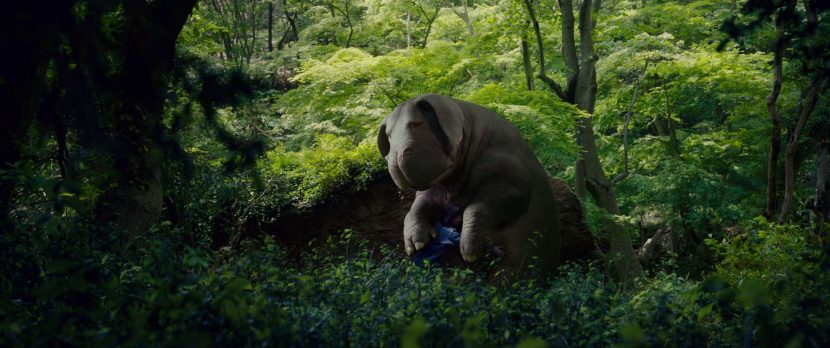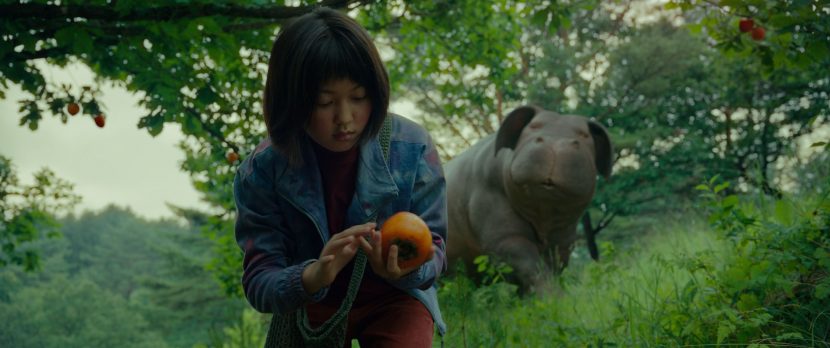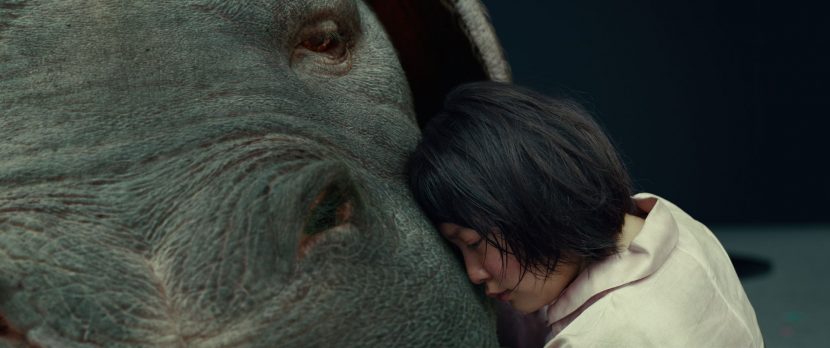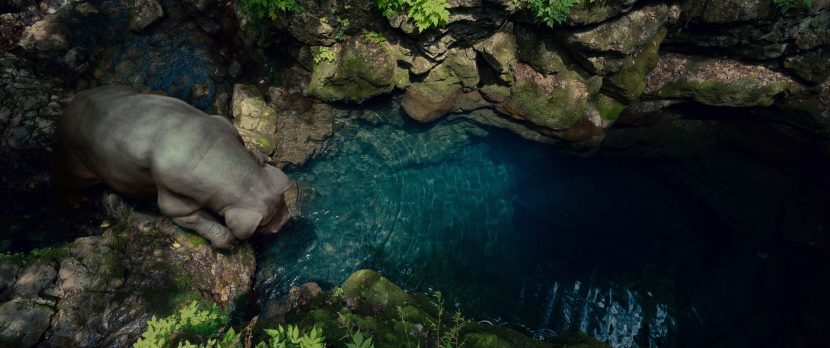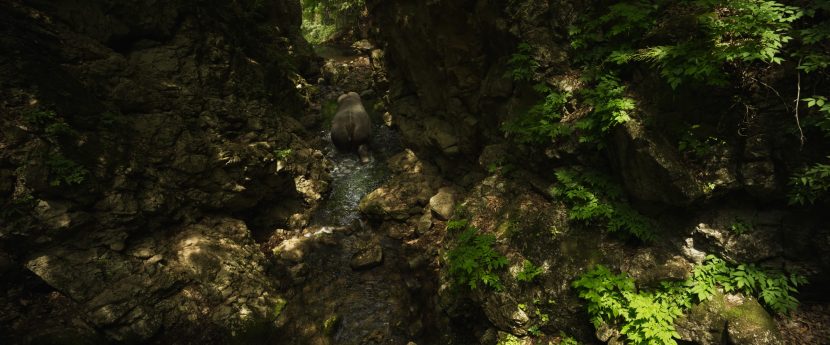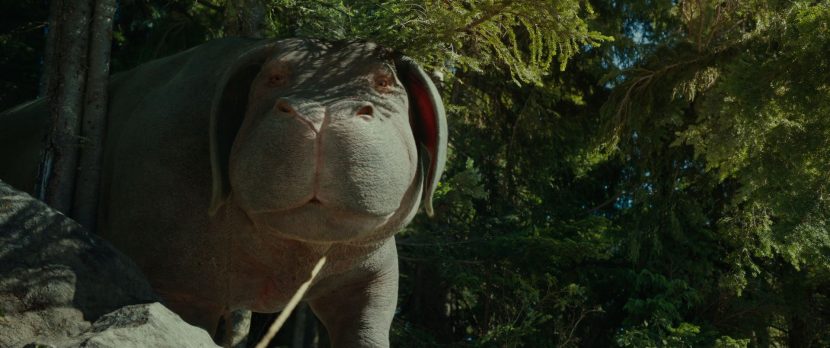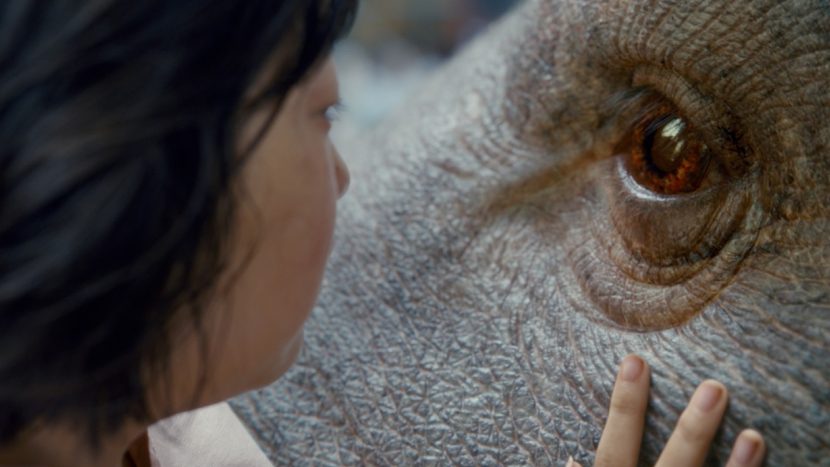When Method Studios visual effects supervisor and Oscar winner (Life of Pi) Erik De Boer, Oscar first met Director Bong Joon-ho to discuss the Korean film Okja, he was not get given a lot of information to work with. “When I first met with Bong, he wasn’t ready to share his script yet so I was left with this weird looking animal and no story to figure out what we were going to be doing.. but it did make for a nice outcome in that I had a few months to just think about what we could do to make this film and character different from what we had done in the past”, commented Boer.
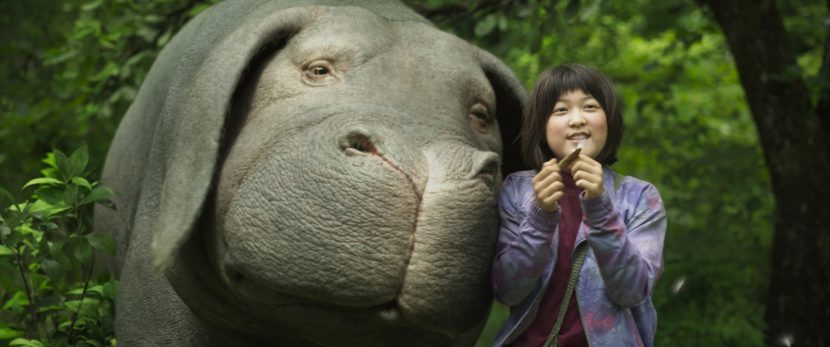 After considering the special animal-child connection Boer tried to work out how the VFX department could support the young actress on set to enable her to deliver her best performance.
After considering the special animal-child connection Boer tried to work out how the VFX department could support the young actress on set to enable her to deliver her best performance.
The first act of the film shows this beautifully. Set in the mountains the first act provides some of the most beautifully crafted visuals and subtle performances of the film. The later actions sequences are big and dramatic but establishing the bond between the girl and her giant genetically engineered pig is the premise upon which the rest of the film relies. If Okja had seemed ridiculous or her owner’s love and affection insincere the whole film would have failed.
Method’s Okja looks less like a pig and more like a hippopotamus, which is the animal the team used for motion and muscular reference. Director Bong Joon-ho’s suggested that the personality be very much based on what might be called canine behavior.
The success of the visual effects rests, as it so often does, on the balance of performance and technology in setting up the whole story.
Performance
Bong Joon-ho is experienced with complex vfx having had his own fair share of visual effects experience on films such as The Host and Snowpiercer. For this new Netflix film, the Director needed to find the unique personality of the Pig. The creature needed to move remarkably quickly at certain points in the film, such as when it rescues Mija (Ahn Seo-hyun) or tries to escape by running through a Mall, yet Okja is huge and extremely heavy. A challenge for any animation team.
‘Stuffies’ on set
What worked well for both performances and visual effects were the rehearsals done to work out the blocking and action. These rehearsals were done with giant stand-in props called ‘Stuffies’.
A foam version of Okja was built and used on set. Method had designed the creature model prior to principal photography and rendered motion tests prior to being on set. This data was used to build accurate on-set props for puppeteering and interaction. Special effects company Cell in South Korea handled that work, based on tech viz from LA using the data to laser cut large sheets of EVA foam and gluing the numbered pieces together into the final shape that would match the giant CG Okja “which gave us a 1:1 model” comments Boer. In the end the team had 25 shapes, some were very specific such as the rig for Okja that was used when Mija lies on her exposed stomach in the forest. But more than just giving the actress Ahn Seo-hyun, an eye line or an object to lean on, the Stuffies were puppeted on set, often times by Stephen Clee, Method’s Animation Supervisor. The blocking and rehearsal process was therefore used by Method from an animation point of view to explore what might be done. By the time the stand-in Mija was replaced with Ahn Seo-hyun, Clee had solved many animation issues. He could thus give the young actress something meaningful in mood and attitude, by manipulating the Stuffie, for her to react to and act with. “We did a lot of those rehearsals, first with her stunt double to make sure we got our moves and our own approaches right. When we were sure we had it right, and we’d learnt all the lessons about the shot, we’d switch to Ahn Seo-hyun. Then we’d do the rehearsal with her to make her as comfortable and focused as possible with the form props we had on set, – this was really one of the biggest differences in how we approached this film” reflects Boer thinking back as to how this film differed from other similar films he had done. It is rare that an animation director has the chance to explore physically an animated character on set and work so directly with the actors to help with their performance.
Technical pipeline
The animation was rendered in V-Ray. Interestingly, the film was mastered in 4K resolution having been shot at 6.5 K with some vintage lensing that had mild vignettes, so a 90% crop was done and then the image was scaled down to to 4K. All the rendering was therefore at 4K. This was significant for Erik De Boer as he noticed a real difference between the 2K renders and the 4K renders. Most films claiming to be 4K are still actually mastered for effects shots at 2K resolution, but not with Okja and this difference of resolution can even be apparent when viewed not at 4K, although this may seem counter-intuitive. The skin on Okja has complex specular highlights and detail that when rendered at higher resolution and then resized produce a more faithful and believable look that just rendering at 2K. “It is going to be hard to go back to the little postage size of 2K now that I have done 4K for a full project. While it sucks quite a bit of energy out of the project in terms of render times, compositing and paint work… at the end of the day you get a gorgeous looking image that is worth all that hassle”, explained Boer.
Part of this is due to the complex way computer graphics reproduce anisotropic specular highlights, based on the detailed compression maps of the skins directional stretching affecting the specular lobes. “When we moved from 2K to 4k We got a lot more detail of course but the quality of the specular highlights really changed, especially on the skin of Okja. Bigger patches of shine, – got more broken up and were definitely an improvement, but is also made the animal read differently. That was a real lesson we had to learn” explains Boer.
The skin was also complex to match in as the DOP Darius Khondji, used a black ProMist diffuser on the shots. Sometimes this meant that the VFX comp team had to “take our CG and blur the hell out of it – it was painful at times, but we had to carefully blur it to make it sit back into the photograph (see the image below),”comments Boer. “But taking the 2K and trying to sit it in the photography was not as successful as doing the same thing with the 4K, even with the digital diffusion”.
The simulations
The vegetation simulations were much more expansive than one might guess from watching the film, given the need for accurate shadows on Ojka.
To have Okja appear in the forest, she needed to be hit with the correct dappled light that comes so beautifully though the trees. But unlike most CG characters the huge smooth sides of her body gave a very obvious canvas for the any digital Gobos to cast shadows. If she walked under a tree the shadow of that branch needed to be very accurate as it was so easy to read the shadows on her body and visually know if they were correct.
So while the location provided a rich environment for the very natural setting, on location Boar would cut down as much close foliage as they could to clear away any close plants. All the tree branches and plants that interact with Okja and cast specific shadows are actually all digital foliage added in after the real branches had been cut or tied away from the frame.
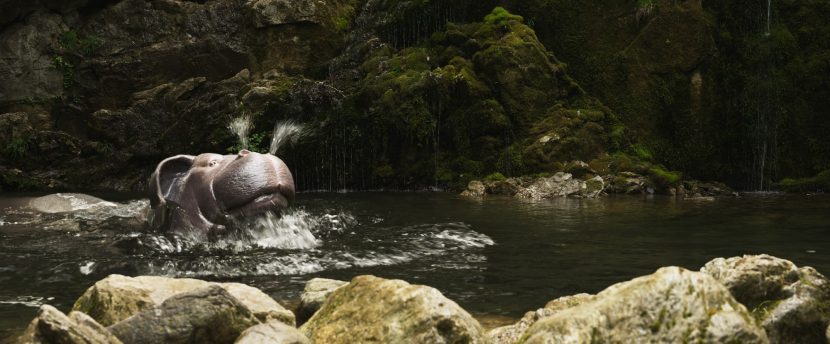
Away from the plants, Okja also goes swimming and this required extensive water sims. In some shots most of the water was completely replaced, in other shots they used splash and ripple elements that were placed on top of the water and blended in – much as Boer had done on Life of Pi.
In both cases this allowed for believable interaction between the digital Okja and her environment.
The other large area of simulation were the flesh simulations on Okja. Boer got the team at Method to try and deliver remarkably accurate flesh simulations on the first pass. This gave the production time to add further art direct after the physics solutions had been worked out. In Boer’s opinion, too many productions lack the time to address and polish shots as the sims are done late in the pipeline and they are so expensive computationally. “I asked our creature supervisor to make sure we got a very reliable first pass out of our tech animation sims and that it was fast”, he explains. “So for every unique piece of motion we had time to go back in and address things”.
The character of Okja provides a great opportunity to see the detailed texture work of the skin. The skin exhibits subtle compressing and stretching, while most high end character work does this, Okja benefited from not having any hair, and being very large in frame. This allowed the audience to really see the quality of the work and how the compression maps contributed. “This is one of the first times that I think we really got it right, we could dial in different sub surface qualities based on the nature of the skin stretch or compression, we heavily used that, and it really visually pays off”.

